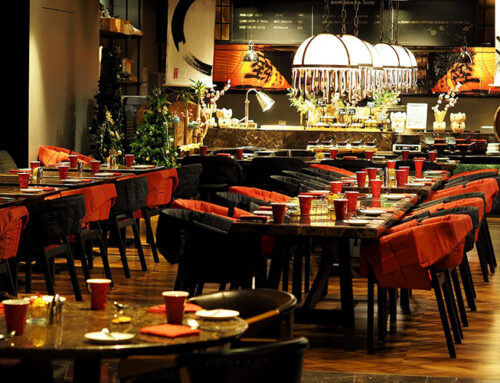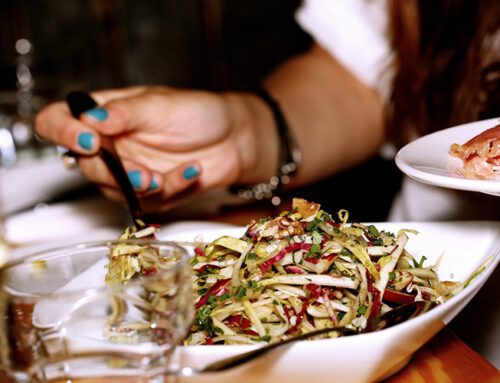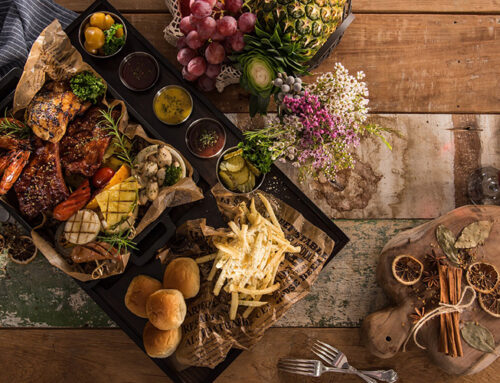Tips for Surviving The Art of Plating: Elevating Your Restaurant’s Presentation
In the world of dining, presentation plays a crucial role in the overall dining experience. The art of plating is the art of presenting food in an aesthetically pleasing and visually appealing manner. It is a technique that has been used by chefs for decades to elevate their dishes and impress their diners. The importance of plating cannot be overstated, as it not only enhances the appearance of a dish but also enhances the flavor and texture of the food. In this article, we will discuss some tips for surviving the art of plating and elevating your restaurant’s presentation.
Focus on the Plate
The plate is the canvas on which the chef creates their masterpiece. It is important to select the right plate for the dish you are serving. The color, shape, and size of the plate can all affect the appearance of the dish. A white plate is often used as it provides a clean and neutral background for the food to be presented on. However, colored plates can be used to complement or contrast with the colors of the food. It is important to ensure that the plate is not too large or too small for the dish, as this can affect the proportion and balance of the dish.
Keep it Simple
When it comes to plating, less is often more. A simple and elegant presentation can often be more effective than a complicated and intricate one. It is important to focus on the quality of the ingredients and let them speak for themselves. Use simple garnishes and avoid overcrowding the plate. The food should be the star of the show, and the presentation should complement it, not overshadow it.
Pay Attention to Color
Color plays a crucial role in the presentation of food. A dish that is visually appealing will be more appetizing to the diner. It is important to consider the colors of the ingredients when selecting the plate and garnishes. Use contrasting colors to create a visually striking dish. For example, a vibrant green pesto sauce on a bed of creamy white mashed potatoes will create a beautiful contrast.
Consider Texture
The texture is an important element of plating. The combination of textures can enhance the overall dining experience. Consider the texture of the ingredients when plating. A crunchy element, such as a toasted breadcrumb or a crispy vegetable, can add a textural contrast to a soft and creamy dish.
Use Contrasting Shapes
The shape of the food and the plate can create an interesting and dynamic presentation. Consider the shape of the ingredients when plating. A round element, such as a meatball, can be paired with a long and thin vegetable, such as a carrot, to create an interesting contrast. Use different shapes and sizes to create a visually appealing presentation.
Play with Height
The height of the food on the plate can create a sense of drama and interest. Use different elements, such as a stack of vegetables or a tower of meat, to create a sense of height on the plate. However, it is important to ensure that the dish is still practical to eat and does not topple over.
Be Creative with Garnishes
Garnishes are a great way to add flavor and visual interest to a dish. Use fresh herbs, edible flowers, or a drizzle of sauce to add a pop of color and flavor. However, it is important to use garnishes sparingly and ensure that they complement the flavors of the dish.
Consider the Season
The season can have a big impact on the presentation of food. Use seasonal ingredients to create a dish that is fresh and in season. For example, in the summer, use fresh berries and herbs to create a light and refreshing dish.
Practice, Practice, Practice
The art of plating takes practice and patience. It is important to take the time to perfect the presentation of your dishes. Experiment with different techniques and styles to find what works best for your restaurant. Take photos of your dishes to review and analyze the presentation. Get feedback from your diners to see what they think of the presentation and how it could be improved.
Keep it Consistent
Consistency is key in the restaurant industry. It is important to ensure that the presentation of each dish is consistent across all of your menus and throughout the restaurant. This will help to create a cohesive dining experience and ensure that each dish is presented at its best.
In conclusion, the art of plating is an essential skill for any chef or restaurateur. The presentation of food is just as important as the flavor and texture of the dish. By following these tips and practicing the art of plating, you can elevate the presentation of your dishes and create a memorable dining experience for your customers.




